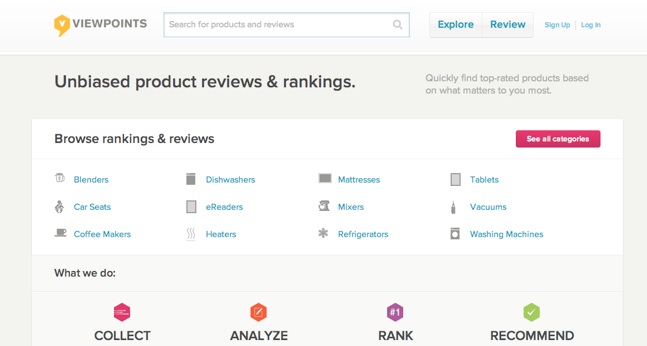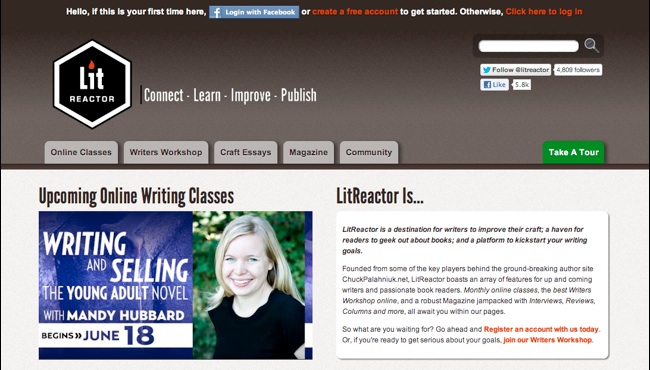 One of the biggest challenges you will face when you launch your online community is getting the right audience engaged. The last thing you want to present to potential members is a blank page.
One of the biggest challenges you will face when you launch your online community is getting the right audience engaged. The last thing you want to present to potential members is a blank page.
Seeding your community with content and members before and right after you launch will help you present the façade of activity in the early stages of your community’s development. It has worked for some of the most successful communities on the web, including Viewpoints and LitReactor.
Viewpoints
Viewpoints, one of the largest review sites on the web, was created by community expert Matt Moog. It launched in 2006 on the strength of around 50 members. Since then, it has grown to average 2 million monthly users and nearly 500,000 registered members. Matt performed strong research on his audience — and, in the process, found the seeds that would help his community grow.

“In the beginning, we reached out to people we found in other online venues who were passionate about reviews,” Matt says. “We asked them for input, and they were happy to help. After all, these are people who have strong opinions and don’t mind writing about them.”
He gathered feedback from reviewers on features they would change in their current review sites. But Matt knew these were the passionate members he needed for his own community, whether they had signed up for it or not. These were the people he needed to take part in making Viewpoints a review powerhouse.
By the time Viewpoints was officially ready to launch, the 50 or so initial members had produced approximately 1,000 reviews. “Five years later, a substantial portion of those reviewers are still a part of the Viewpoints community,” Matt adds.
What Viewpoints can teach us about seeding an online community is that it is people who make a community successful. Following that logic, seeding should start with people, not content. It’s easy to take matters into your own hands and write a few articles or start a few forum threads. But using that as your basis for seeding the site is to ignore the human element that will drive your community forward.
Takeaways for content marketers
Not sure how to get started seeding your community? Here are some tips on what kind of people can help get your website started on the right foot:
- Online advocates: First and foremost, seek out people who already play an active role online in conversations of interest to your community.
- Industry voices: Get in touch with prolific voices in your industry and ask them to participate in the early stages of your community. You may not think you have a chance at prominent bloggers, journalists, and independent professionals, but you never know until you ask.
- Other professionals: Even if they aren’t necessarily prolific in your industry, there are plenty of professionals out there looking to build their personal brands. Knowledgeable interaction ensures high-quality content.
- Freelancers: Freelance writers and community professionals are trained in researching the topics that matter most to their audiences and delivering high-quality content around those topics. Take personality types into consideration as well. Combative, profane, or obscene people usually don’t make positive advocates for your community. People who are well-spoken, respectful, and excited about the topic make better pioneers for the community. Consider the motivations of your seeded members. Do they represent a vendor in the industry? If a potential seeded member is selling something, he might not be the best person to get your community started on the right foot. Finally, budget some capital toward incentivizing early interaction and source contributions from seeded members. That way, you can be sure you’ll have quality interaction and content by the time you’re ready to launch.
LitReactor
You can also learn from the approach taken by LitReactor, a new online literary community that was launched in late 2011. Kirk Clawes, one of the company’s founders, explains how they built an audience before they launched:
“We thought, ‘Why not reach out to authors who our target audience enjoys and ask them for writing advice?’” Kirk says. “So we sent questions out to a list of authors we enjoyed. Around 15 writers were happy to take part in the project, helping to create a compendium of advice in eBook format.
“A few weeks before the launch, we started recruiting potential members through an email list. As an incentive to join the list, we offered the eBook as a freebie.”
The strategy worked: By the time LitReactor launched, Kirk already had a mailing list audience of around 5,000 people.
Takeaways for content marketers
Keep the following tips in mind while crafting your own strategy to get people talking:
1. Be unique. If members and prospects can get the same value from a more established community, why would they choose yours? Send compelling, original content out into the web and it’ll return an influx of relevant interest.
2. Be yourself. Whatever you choose for your buzz-building technique, ensure that it accurately reflects the purpose, message, and overall identity of your community. For instance, LitReactor solicited advice only from authors who accurately represented the interests of his target audience.
3. Be dynamic. Promote your strategy through every channel you have at your disposal in order to get the word out. That includes press release wires, social networking profiles, email lists, partner websites — anything you might use for general marketing.
If you want to learn more about online communities, check out my new book, “Capturing Community.”
Want more content marketing inspiration? Download our ultimate eBook with 100 content marketing examples.
